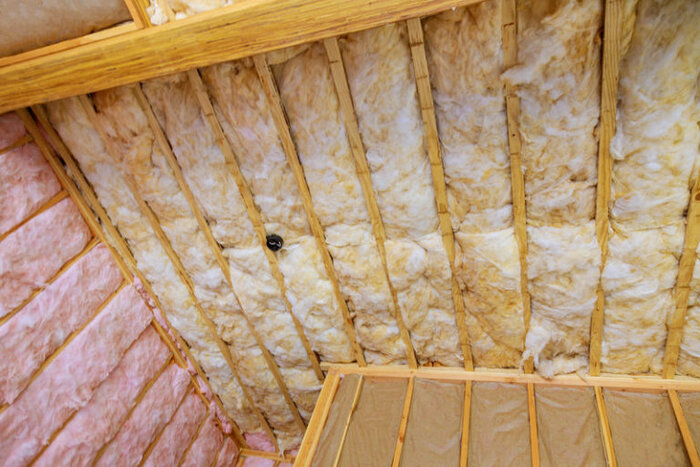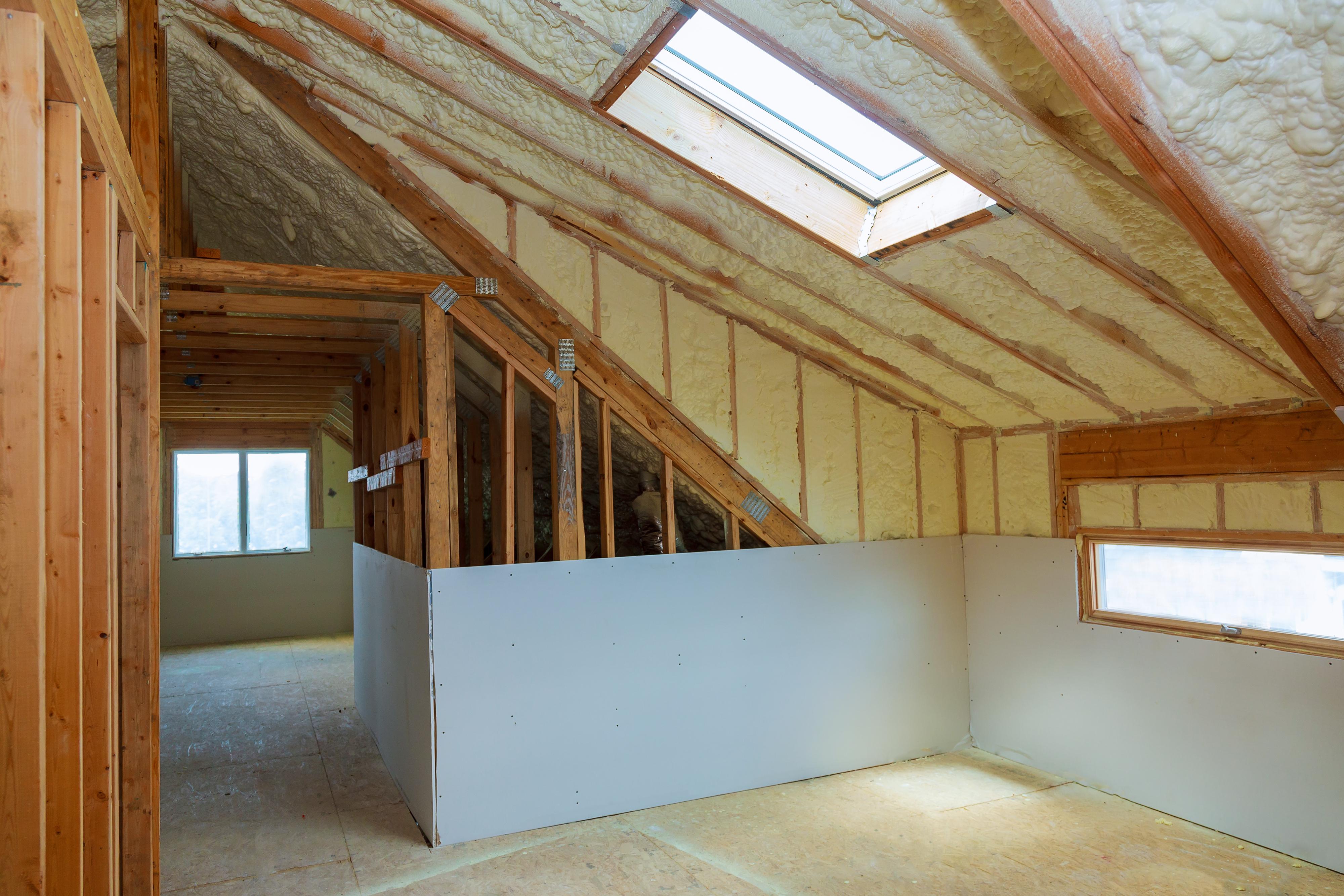Attic Insulation DFW: Increase Your Home's Value and Performance
Attic Insulation DFW: Increase Your Home's Value and Performance
Blog Article
Discover the Various Kinds Of Attic Insulation and Their Special Advantages for Your Home's Power Performance

Fiberglass Insulation
Fiberglass insulation is among the most generally used products for attic insulation as a result of its excellent thermal efficiency and cost-effectiveness. Made up of little glass fibers, this product successfully traps air, developing a protecting obstacle that helps maintain consistent interior temperature levels. Its high R-value per inch makes it especially reliable at resisting heat transfer, which is critical for power preservation in homes.
Setup of fiberglass insulation is reasonably simple, often available in batts or loose-fill types, suiting different attic setups. Furthermore, it is non-combustible and resistant to moisture, lowering the threat of mold and mildew advancement. This sturdiness contributes to its longevity, making fiberglass a viable long-term investment for house owners.
Moreover, fiberglass insulation is often made from recycled materials, which improves its eco-friendliness. The material can additionally add to soundproofing, decreasing noise transfer between spaces. While it is essential to put on protective equipment during setup to stay clear of irritation from the fibers, the total advantages of fiberglass insulation, consisting of energy savings and environmental factors to consider, make it a popular selection for improving attic room efficiency and promoting a comfortable living setting.
Spray Foam Insulation
Spray foam insulation is an extremely reliable choice for attic room insulation, known for its superior air securing and thermal efficiency. This ingenious insulation material is made up of a blend of isocyanate and polyol material, which, when integrated, broadens swiftly to fill up spaces and dental caries in the attic room. Its capacity to abide by numerous surfaces makes sure a constant obstacle against air leakages, considerably decreasing warm loss during colder months and warm gain throughout warmer periods.
Among the vital advantages of spray foam insulation is its high R-value per inch, which suggests it provides exceptional thermal resistance in a reasonably thin application. This is especially helpful in attics where area is often restricted. In addition, spray foam can assist decrease wetness buildup, lowering the danger of mold and mildew and mold development, which can be detrimental to both the structure and indoor air top quality.
While the preliminary price of spray foam insulation may be greater than conventional options, its long-lasting power cost savings, paired with enhanced convenience and boosted home value, make it a beneficial financial investment for home owners looking for enhanced power efficiency. Attic Insulation DFW. In general, spray foam insulation stands apart as a reliable solution for maximizing attic room insulation
Cellulose Insulation

Cellulose insulation is a popular selection for attic room insulation, mostly made up of recycled paper products treated with fire retardants. This eco pleasant alternative is known for its exceptional thermal performance, efficiently decreasing warm transfer in both summertime and winter season months. review The dense make-up of cellulose enables it to fill spaces and voids in attic room rooms, offering a seamless barrier against air leakages.
One of the significant advantages of cellulose insulation is its capability to withstand mold and mildew and parasites, owing to the fire resistant therapies utilized throughout production. Furthermore, it flaunts a high R-value per inch, which equates right into exceptional power performance. House owners can expect reduced home heating and air conditioning costs as an outcome of improved insulation.
Setup is generally completed with blowing loose cellulose right into the desired location, permitting a efficient and fast procedure. This technique also lessens interruption to the existing framework. Moreover, cellulose insulation has a reasonably reduced environmental effect, as its manufacturing procedure utilizes recycled products, adding to lasting structure practices.
Rock Wool Insulation
Among the various alternatives for attic room insulation, rock wool, likewise recognized as mineral wool, check sticks out due to its outstanding thermal and acoustic efficiency. Made from natural or recycled materials, rock wool is created by melting rock and rotating it into fibers, resulting in an item that supplies exceptional insulation properties.
One of the substantial advantages of rock woollen insulation is its high R-value, which shows its efficiency in resisting heat flow. This particular not only improves power effectiveness but likewise adds to keeping a comfortable interior temperature year-round. In addition, rock woollen is inherently fireproof, making it a safer choice for homes as it can stand up to heats without melting or releasing poisonous fumes.
Furthermore, rock wool insulation stands out in soundproofing capacities, successfully lowering noise transmission in between spaces and from outdoors resources. On the whole, rock woollen insulation supplies an extensive remedy for boosting power performance, safety, and comfort in household setups.
Glowing Barrier Insulation
Radiant obstacle insulation works as an efficient option for minimizing warmth transfer view in attics, particularly in warmer climates. This kind of insulation jobs by reflecting glowing heat away from living rooms, thereby lowering the amount of warm that enters a home throughout heat - Attic Insulation DFW. Generally composed of an extremely reflective material, such as light weight aluminum foil, radiant barriers are installed in attics, encountering the roofing system, where they can obstruct inbound heat from the sunlight
The key benefit of glowing obstacle insulation is its ability to lower cooling expenses. By reflecting heat as opposed to absorbing it, radiant obstacles can help keep a much more stable interior temperature level, minimizing the work on air conditioning systems. This effectiveness translates right into lower energy expenses and increased convenience for property owners.
Along with energy savings, radiant barriers can likewise contribute to improved interior air quality. By lowering warm buildup, they help decrease humidity degrees, which can prevent mold and mildew growth and enhance overall air blood circulation. When mounted appropriately, glowing barrier insulation can be an invaluable enhancement to any energy-efficient home, making it a deserving consideration for property owners looking to boost their attic room insulation strategy.
Final Thought
In conclusion, recognizing the various types of attic room insulation-- fiberglass, spray foam, cellulose, rock wool, and glowing obstacles-- enables home owners to make informed choices regarding energy performance. By selecting the proper insulation product, significant reductions in energy prices can be achieved, along with enhancements in indoor comfort.

In conclusion, understanding the numerous kinds of attic insulation-- fiberglass, spray foam, cellulose, rock wool, and glowing obstacles-- allows property owners to make enlightened choices relating to energy efficiency.
Report this page